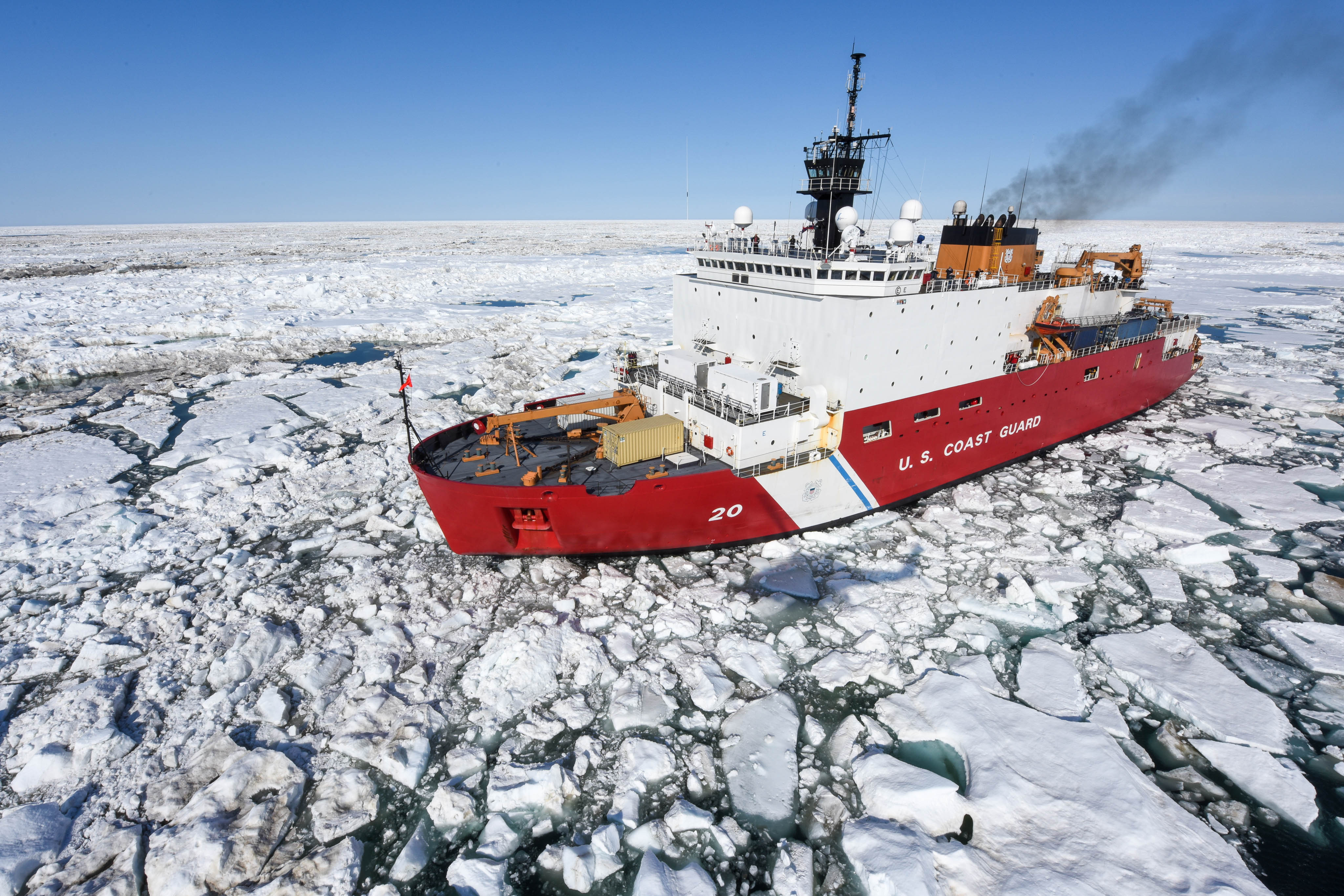The only US icebreaker sailing the Arctic faces extensive repairs after an engine fire
The U.S. Coast Guard expects the ship to be operational again for its next Arctic patrol in 2021.

After suffering an engine fire that cut its Arctic patrol season short, the icebreaker USCGC Healy is now undergoing extensive repairs.
Last week, the Coast Guard hauled out a 23-year-old engine, weighing 106 tons, from a storage facility in Baltimore. Next, a barge will carry the engine from the U.S. East Coast to the West Coast, traversing the Panama Canal.
It’s not clear when repairs will begin, how long they will take or when they will conclude.
“We don’t have an estimated time of repair yet; that will be negotiated with shipyard depending the exact scope of work,” NyxoLyno Cangemi, an assistant public affairs officer with the Coast Guard, told ArcticToday.
But the service expects the ship to be operational again in time for its next Arctic patrol in 2021.
[US cancels Arctic operation after an engine fire aboard the icebreaker Healy]
In the meantime, transporting and installing the engine promises to be a mammoth task.
While the replacement engine is on the barge, for instance, it will rest under a protective enclosure, which was custom-made from steel. And when it arrives in Seattle, parts of the Healy will have to be cut open in order to replace a propulsion motor, Breaking Defense reports.
The Healy, the only U.S. icebreaker to regularly conduct Arctic patrols, was launched in 1997 and commissioned in 1999, making it more than two decades old.
While the only other polar-capable icebreaker in the U.S. fleet, the 44-year-old Polar Star, is still operational, it is devoted to the annual breakup and resupply of McMurdo Station in Antarctica.
The Polar Star has had its share of issues — most recently breaking down and catching fire in 2019. The heavy icebreaker underwent a $62 million overhaul in 2010, and the Coast Guard released another request for proposals this February to extend the vessel’s service life once more.
Before the August engine fire, the Healy was less prone to incidents, but they become more likely as the vessel ages.
“A fire aboard any of our ships is always a surprise, but it’s also a situation we constantly train for,” Cangemi said. “You can’t call 911 and expect someone to show up to help.”
This is particularly true in the Arctic, which has long coastlines, extreme conditions and few backup vessels to rescue an icebreaker in distress.
The incident underlines the necessity to recapitalize the U.S. icebreaker fleet, Cangemi said, which would provide the Coast Guard with the ability to rescue its own icebreakers as needed and allow the service to “increase its presence in the high latitudes.”
At present, Cangemi said, the Coast Guard would need to call on assistance from other nations if the Polar Star became stuck in the ice in Antarctica, for instance.
More icebreakers also mean better Arctic “domain awareness” for the Coast Guard, Cangemi said, “as we could rotate cutters and crews in the Arctic and increase America’s presence.”
In addition to national security mandates, the U.S. icebreakers perform “essential” scientific research in the polar regions, John Farrell, executive director of the U.S. Arctic Research Commission, told ArcticToday.
“For the U.S. Arctic research community, the sooner that Healy is back in action, the better,” he said. Until then, the U.S. scientific community will have to either defer Arctic research or try to accomplish it on icebreakers from other nations, he said. “But that will prove difficult, as scheduling use of icebreakers occurs years in advance. It’s not like Uber.”
In April 2019, the Coast Guard awarded a contract for its first new heavy icebreaker in four decades. However, that vessel, which will begin construction in 2021, may not be delivered until 2024 or even later. And it will likely take on the McMurdo mission, rather than heading to the Arctic.
President Donald Trump’s budget request for the fiscal year 2021, which began on Oct. 1 without an approved budget, included $555 million in funding for a second new icebreaker.
And in February, Adm. Karl L. Schultz, commandant of the U.S. Coast Guard, announced plans for a third heavy icebreaker as well as three medium breakers — but he did not announce a timeline for these plans.
Schultz has also emphasized the lack of communications in the Arctic. In February, he said, “When Healy sails this summer, it will do so, yet again, without reliable communications for large portions of its multi-month patrol.”
As the U.S. icebreaker fleet ages and mechanical breakdowns become more likely, improving these communications will also be critical to supporting Coast Guard missions, Schultz has said.
In June, Trump called for a speeded-up plan to expand the U.S. icebreaker fleet by as many as 10 new or leased vessels by 2029. While his memo included potential plans for arming icebreakers and powering them with nuclear propulsion, it did not mention expanding Arctic infrastructure, such as deepwater ports or improved communications.
“With limited options, we have increased risks, plain and simple,” Farrell said. The Coast Guard is doing the best it can, he said, but “tape and baling wire will get you only so far.”
The federal government will need to continue prioritizing Arctic infrastructure funding, from icebreakers to communications, in order to maintain its presence in the region, he said.